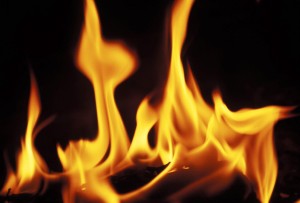When my father was a youth he was working in the kitchen and bumped the stove. A pot of boiling oil was disturbed and a portion spilled over his hand, literally melting the skin. He told me his hand looked like a duck’s foot. In Iraq I saw a guy pick up a ramming staff that had been lying in the shade without gloves and blister his hand (it was around 130 degrees), and a few years ago my sisters child put his palm on the glass front of their gas fire and had to have large portions of his skin removed.
The point with these stories is that we are all exposed to burns at one time or another, and with varying range of severity. You may never have more than sunburn in your life; but regardless, it’s good to know what to do. I turned to the Army’s Skill Level 1 book because it’s what I’m most familiar with and I think it is simple to understand; although I have taken the liberty to add a few of my own thoughts. For minor burns, like first and some second degree burns, run it under water like your mom always told you to do when you touched the stone, and take some painkillers; before you bandage it up use a little antiseptic to prevent infection. Leaving the blisters alone will also help prevent infection. For anything more serious read below, and seek medical aid as soon as possible.
Jon
1. Eliminate the source of the burn.
a. Thermal burns. If the casualty’s clothing is on fire, cover the casualty with a field jacket or any large piece of nonsynthetic material and roll him on the ground to put out the flames.
Thermal burns are typically broken out by severity into:
First degree burns — The skin is red and painful like a sunburn, but blisters are not present.
Second degree burns — The skin is red and painful; blisters are present.
Third degree burns — The skin layers are destroyed and underlying fat, muscles, and/or bone may also be damaged. The burn area may not be painful because the nerves have been destroyed, but the surrounding second and first degree burn areas may be painful.
b. Electrical burns. If the casualty is in contact with an electrical source, turn the electricity off if the switch is nearby. If the electricity cannot be turned off, drag the casualty away from the source using any nonconductive material (rope, clothing, or dry wood).
WARNING-Do not touch the casualty or the electrical source with your bare hands. You will be injured too! Use a nonconductive material to pull the casualty away from the power source.
WARNING-High voltage electrical burns from an electrical source or lightning may cause temporary unconsciousness, difficulties in breathing, or difficulties with the heart (irregular heartbeat)
c. Chemical burns.
WARNING-Blisters caused by a blister agent are actually burns. Do not try to decontaminate skin where blisters have already formed. If blisters have not formed, decontaminate the skin
(1) Remove liquid chemicals from the burned casualty by flushing with as much water or other nonflammable fluid as possible.
(2) Remove dry chemicals by carefully brushing them off with a clean, dry cloth. If large amounts of water are available, flush the area. Otherwise, apply no water.
(3) Smother burning white phosphorus with water, a wet cloth, or wet mud. Keep the area covered with the wet material.
d. Laser burns. Move the casualty away from the source while avoiding eye contact with the beam source. These are not caused by light sabers, but many modern weapo0ns systems utilize high powered lasers which typically affect the eyes but can affect the skin with prolonged exposure.
Note. After the casualty is removed from the source of the burn (i.e. flames), he should be monitored continually for the development of conditions that may require the performance of basic lifesaving measures.
2. Uncover the burn.
WARNING-Do not uncover the wound in a chemical environment. Exposure could cause additional harm
a. Cut clothing covering the burned area.
WARNING-Do not attempt to remove clothing that is stuck to the wound. Additional harm could result
b. Gently lift away clothing covering the burned area.
Note. Do not pull clothing over the burns. It could be advisable to cut the free material around the burn and leave the sticking material in place.
Note. If the casualty’s hand(s) or wrist(s) have been burned, remove jewelry (rings, watches) and place them in his pockets.
3. Apply a field dressing to the burn. In the absence of a field dressing use dry gauze and another material to secure and cover the gauze. This is largely to cover the wound until the professionals can begin working on it and one of your main objectives is to keep out contaminants.
Note. If the burn is caused by white phosphorus, the dressing must be wet (you’re not gonna see this on the civilian side).
a. Apply the dressing, white side down, directly over the wound.
b. Wrap the tails so that the dressing is covered and both sides are sealed.
c. Tie the tails into a nonslip knot over the outer edge of the dressing, not over the wound.
d. Check to make sure that the dressing is applied lightly over the burn but firmly enough to prevent slipping.
Note. Electricity often leaves entry and exit burns. Both burns should be treated.
4. Observe precautions to avoid further injury.
a. Do not break blisters.
b. Do not apply grease or ointments to the burns.
c. Do not place dressings over the face or genital area.
Note. If the casualty is conscious and not nauseated, give him small amounts of water to drink.
Note. Watch the casualty closely for life-threatening conditions, check for other injuries, and seek medical aid.


Leave a Reply